Tie Fabrics
Guide to Necktie Fabrics
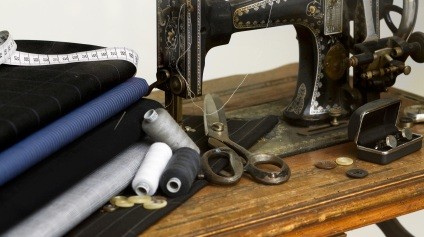 Have you ever gone tie shopping and looked at the labels sown into the back of the tie telling you what the tie is made of? If you think that all neckties are made from silk, then take a look at the ties in your own wardrobe. I bet you will be surprised what type of fabric blends you will find. Below I put together a list of the most common fabrics used for making a men’s tie. Instead of just listing dozens of different fabrics, I decided to group them into five categories.
Have you ever gone tie shopping and looked at the labels sown into the back of the tie telling you what the tie is made of? If you think that all neckties are made from silk, then take a look at the ties in your own wardrobe. I bet you will be surprised what type of fabric blends you will find. Below I put together a list of the most common fabrics used for making a men’s tie. Instead of just listing dozens of different fabrics, I decided to group them into five categories.
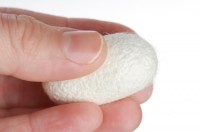 “Seasonless” Fabrics
“Seasonless” Fabrics
By “seasonless” I mean all the classic fabrics that can be worn in any of the four seasons of the year. The first fabric that comes to mind here is silk. Silk is a natural fiber that dates back to the 27th century BC in China. Amazingly, during the 5,000+ years that silk has been used, not much has changed in its production. Silk is made from the cocoons of silk worms (first picture above) that are farmed (mostly in China) in the millions. On average each silk worm (2nd picture) produces 1,500 – 3,000 feet of fine, raw silk. To get a single pound of raw silk over 2,000 worms have to get to work – this translates to about 150 per necktie. Now, if you are an animal lover then you may want to think twice about buying a silk tie since all these 150 worms are killed during the silk production.
Silk is made from the cocoons of silk worms (first picture above) that are farmed (mostly in China) in the millions. On average each silk worm (2nd picture) produces 1,500 – 3,000 feet of fine, raw silk. To get a single pound of raw silk over 2,000 worms have to get to work – this translates to about 150 per necktie. Now, if you are an animal lover then you may want to think twice about buying a silk tie since all these 150 worms are killed during the silk production.
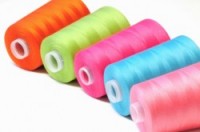 Cheap Synthetics & Silk Imitations
Cheap Synthetics & Silk Imitations
If the above paragraph got you thinking about buying ties made from something other than silk, then the following fabrics might be good alternatives. Advances in synthetic fibers now offer many man-made, “vegan friendly” fabrics that come very close in look and feel to genuine silk. In fact, they often offer additional advantages: they are cheaper, they take on dyes more easily (meaning they are available in more colors), usually don’t wrinkle as easily, and are a bit more stain resistant. The two most common synthetics used on neckties are polyester and microfiber. Polyester is cheaper in price, but also in look. A better choice is microfiber. A quality microfiber tie will look almost identical to silk, but will cost less than half the price.
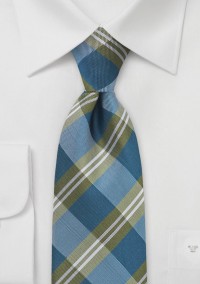 Summer Tie Fabrics
Summer Tie Fabrics
Just like there are summer fabrics for men’s suits, there are so-called “Summer Tie Fabrics”. The two most common summer specific tie fabrics are linen and cotton. These ties often come in light pastel colors and show typical summer patterns such as plaids, delicate stripes (such as seersucker), and playful polka dots. When matching these ties make sure to pair them with complementing summer suits and shirts. Suits made from linen and/or cotton in lighter colors are excellent for these summer-specific neckties. Also, these fabrics often add a more casual/leisure look to the tie – something to keep in mind when dressing for a conservative office setting.
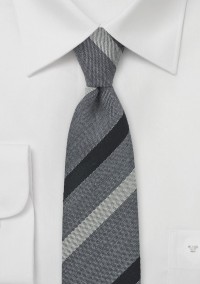 Winter Fabrics
Winter Fabrics
While linen and cotton are classic summer tie fabrics, wool and other “warmer” weaves are common choices among winter ties. Worsted wools (pictured is a worsted wool tie by designer BlackBird), tweed, cashmere, and different wool blends are common choices. My tip: Add a few of these “winter ties” to your wardrobe. Look for ties that are slightly narrower in width (2.5 – 3 inches) which will be a nice, elegant contrast to the somewhat rugged look of the coarse fabric.
Trendy & Unconventional Tie Materials
During the early 80s skinny ties made from leather came into fashion – something that (fortunately so) did not last long. Today leather is typically only found on bolo ties (aka Western ties). Last but not least, I have seen neckties made from bamboo – a fabric that actually looks and feels much like cotton, but is apparently more eco-friendly and sustainable.
Some More Suggested Readings:
Tips to Find Your Perfect Tie
Tips for Skinny Ties
Thanks for Visiting Tie-a-Tie.net – A Site Teaching Men How to Tie a Tie
where can I buy necktie fabric so that I can make a tie myself?
Hi Suzanne,
Most fabric shops will have a decent selection of silk or man-made microfiber fabrics. I have bought fabrics on my travels to Italy before. Como in Ialy is world famous for their silk production.
Hendrik
What is the percentage of silk normally used in silk tie?
Is it really 100% ?
Great question. If the tag reads 100% silk (seta in Italian), then the tie fabric is indeed 100% silk. But the lining inside the tie is usually made from a different fabric such as merino wool, cotton/wool blend, or a less expensive polyester blend. Should you seek a tie that is 100% silk including the lining, then you would have to shop for so-called 7 fold ties. These type of ties use one larger, single piece of fabric that is folded 7x to create a finished necktie. That means there is no lining. For more info on 7-fold ties, please check out this post here: http://www.tie-a-tie.net/blog/7-fold-ties-what-it-means/
Hi, I’d like to incorporate a menswear look in my son’s bedroom and want to have some pillows made of striped tie silk fabric; any idea where I can purchase that? Thanks for any insight!
Penny
Hi Penny, what a fun idea. Looks like your son will grow up to be a dapper man. You should be able to fund inexpensive silk ties in thrift stores. You can also contact retailers asking them for defective ties as those typically just get thrown away otherwise.
Where to buy fabric for tie’s wholesale?
I would to inquire some fabrics for tie making with a pattern or design patent. how costly it would be if a company can reproduce the design on the fabric for tie making?